Teaching Information Fluency
How to Teach Students to Be Efficient, Ethical, and Critical Information Consumers
Carl Heine and Dennis OConnor
THE SCARECROW PRESS, INC.
Lanham Toronto Plymouth, UK
2014
Published by Scarecrow Press, Inc.
A wholly owned subsidiary of The Rowman & Littlefield Publishing Group, Inc.
4501 Forbes Boulevard, Suite 200, Lanham, Maryland 20706
www.rowman.com
10 Thornbury Road, Plymouth PL6 7PP, United Kingdom
Copyright 2014 by Scarecrow Press
All rights reserved. No part of this book may be reproduced in any form or by any electronic or mechanical means, including information storage and retrieval systems, without written permission from the publisher, except by a reviewer who may quote passages in a review.
British Library Cataloguing in Publication Information Available
Library of Congress Cataloging-in-Publication Data
Heine, Carl, 1951
Teaching information fluency : how to teach students to be efficient, ethical, and critical information consumers / Carl Heine, Dennis OConnor.
pages ; cm
Includes bibliographical references and index.
ISBN 978-0-8108-9062-6 (pbk : alk. paper) ISBN 978-0-8108-9063-3 (ebook)
1. Information Literacy study and teaching 2. Computer literacy study and teaching
2013021294
 The paper used in this publication meets the minimum requirements of American National Standard for Information SciencesPermanence of Paper for Printed Library Materials, ANSI/NISO Z39.48-1992.
The paper used in this publication meets the minimum requirements of American National Standard for Information SciencesPermanence of Paper for Printed Library Materials, ANSI/NISO Z39.48-1992.
Printed in the United States of America.
Foreword
We dont have to look very far these days to see the dramatic changes brought to our lives by the wealth of digital information available today. We are surrounded by it. Virtually every aspect of our lives is being impacted in some way, large or small. Familiar phrases, such as information explosion and information age, coined in the latter half of the twentieth century, hardly seem to do justice to the rapidity and magnitude of the changes taking place every day.
The rise and proliferation of digital information formats and tools has brought with it significant challenges as well as apparently endless opportunities. As with any new resource or tool, realizing its potential requires understanding its inherent strengths and weaknesses, acquiring the skills to use it well rather than badly, and adopting the attitudes needed to ensure we make the most of its possibilities. But these essential skills dont always come easily, even for a generation that has grown up in an increasingly digital world.
Digital information fluency, as described in this book, is a set of knowledge, skills, and attitudes essential to using this newfound wealth of information to make a difference in our world. Some of these proficiencies are included in what is known as information literacy. But the terms digital and fluency are intended to focus attention on the expanded and less familiar aspects of these new proficiencies.
Perhaps an analogy will help. Digital photography, which has virtually replaced film-based photography in recent years, has much in common with traditional photography. The skills of selecting what to include in a picture, adjusting the exposure for different lighting conditions, focusing the lens so the key figures or objects are clear, and similar skills are fundamental to creating any good photograph. But anyone who has used a digital camera knows that learning to use this new tool involves sometimes challenging adjustments to our familiar habits. We find ourselves looking at the picture not through a viewfinder but in a small screen on the back of the camera. Changing settings doesnt involve buttons but rather electronic menus that must be navigated using unfamiliar and sometimes counterintuitive strategies. We can see the pictures immediately after we take them, if (and only if) we know which sequence of steps to take. We can print our own glossy-paper picturesif we have learned to download the pictures, find the right paper, and operate the printer properly. Pictures can be sent instantaneously to friends and family without waiting for them to be developedif we have the interest and the patience to learn how to attach them to an e-mail.
Using these powerful and time-saving new features successfully requires us to add to the fundamental skills of photography a number of new ones that are unique to the new equipment and the new contexts in which we use them. In other words, having film-based photography skills doesnt guarantee success using a digital camera, particularly if we mean taking advantage of the new applications for which they were created. In addition, the ability to put digital photography skills to use in the circumstances in which we often take candid pictures can be demanding. When we see a photographic opportunity, we often have to grab the camera, make composition decisions, alter the cameras settings, and take the picture before the window of opportunity passes. Success at this task requires not just a passing familiarity with how to use these new skills but a practiced habit that enables us to perform the activity quickly and seamlessly. This is what is we mean by fluency. In real work situations, it is often crucial to be able to apply digital information skills effectively and efficiently.
Digital information fluency competencies are much more complex and much more powerful than those needed to use a digital camera well. As the term fluency implies, they are more akin to language skills that are prerequisites to and enablers of many other kinds of learning. And like language skills, they are versatileapplicable to a wide range of problem-solving activities from planning a vacation or buying birthday presents to diagnosing complex diseases or delving into the secrets of the atom.
On the basis of my own observations as well as data cited elsewhere in this book, it is clear that the knowledge, skills, and attitudes of digital information fluency are not typically learned during a students formal educational experience. National educational standards, such as the Common Core State Standards and the National Educational Technology Standards, include these proficiencies in their recommendations, but they have yet to be fully adopted and implemented in a systematic way. Additional challenges are posed by the fact that many students overestimate their proficiencies in this area. Both these trends, documented elsewhere in the book, highlight the importance of providing students and adults alike with learning experiences that will enable them to acquire these essential proficiencies.
The following chapters provide readers with both a deep theoretical understanding of digital information fluency and a wealth of practical strategies for helping learners of all ages acquire what are becoming critical real-world skills that will enable them not just to survive but to thrive in an increasing digital world.
D. David Barr
Illinois Mathematics and Science
Academy, Emeritus
Acknowledgments
This book would not have been possible without the contributions and support of numerous individuals and organizations over the years. Foremost, we wish to recognize David Barr for his mentorship and partnership in developing the information fluency model around which this book and approach to information fluency is built. As principal investigator on the Department of Education grant that gave birth to the 21st Century Information Fluency Project (21CIF) in the early 2000s, David is personally responsible for many of the fundamental concepts articulated in this book. Without his pioneering leadership, the focus of the research and much of the philosophy and content of this book would never have been pursued or come to light.
Next page
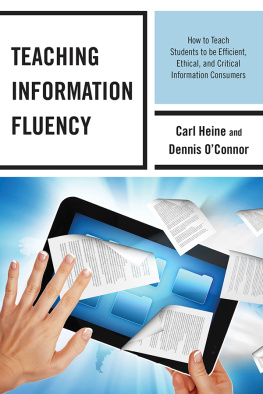
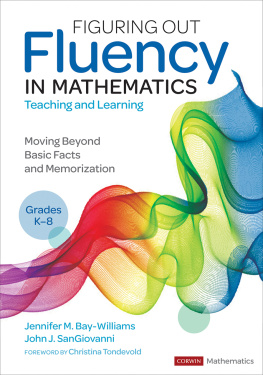
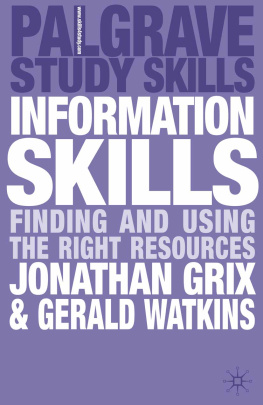

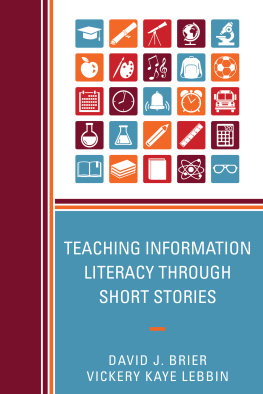
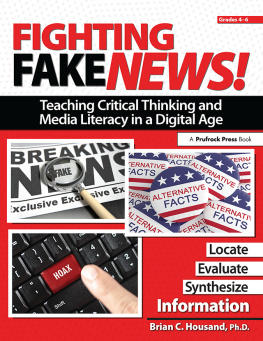
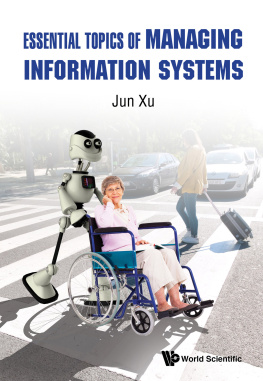
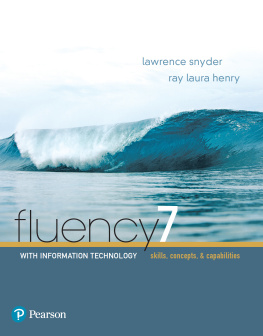

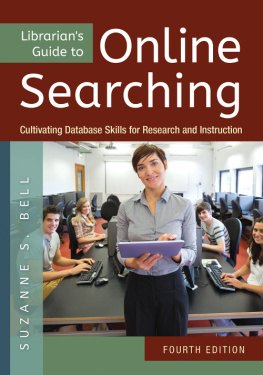
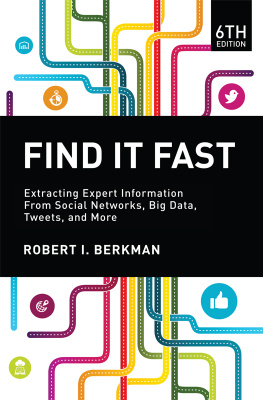
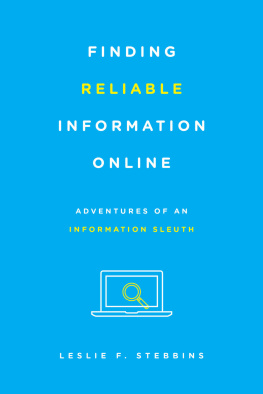
 The paper used in this publication meets the minimum requirements of American National Standard for Information SciencesPermanence of Paper for Printed Library Materials, ANSI/NISO Z39.48-1992.
The paper used in this publication meets the minimum requirements of American National Standard for Information SciencesPermanence of Paper for Printed Library Materials, ANSI/NISO Z39.48-1992.